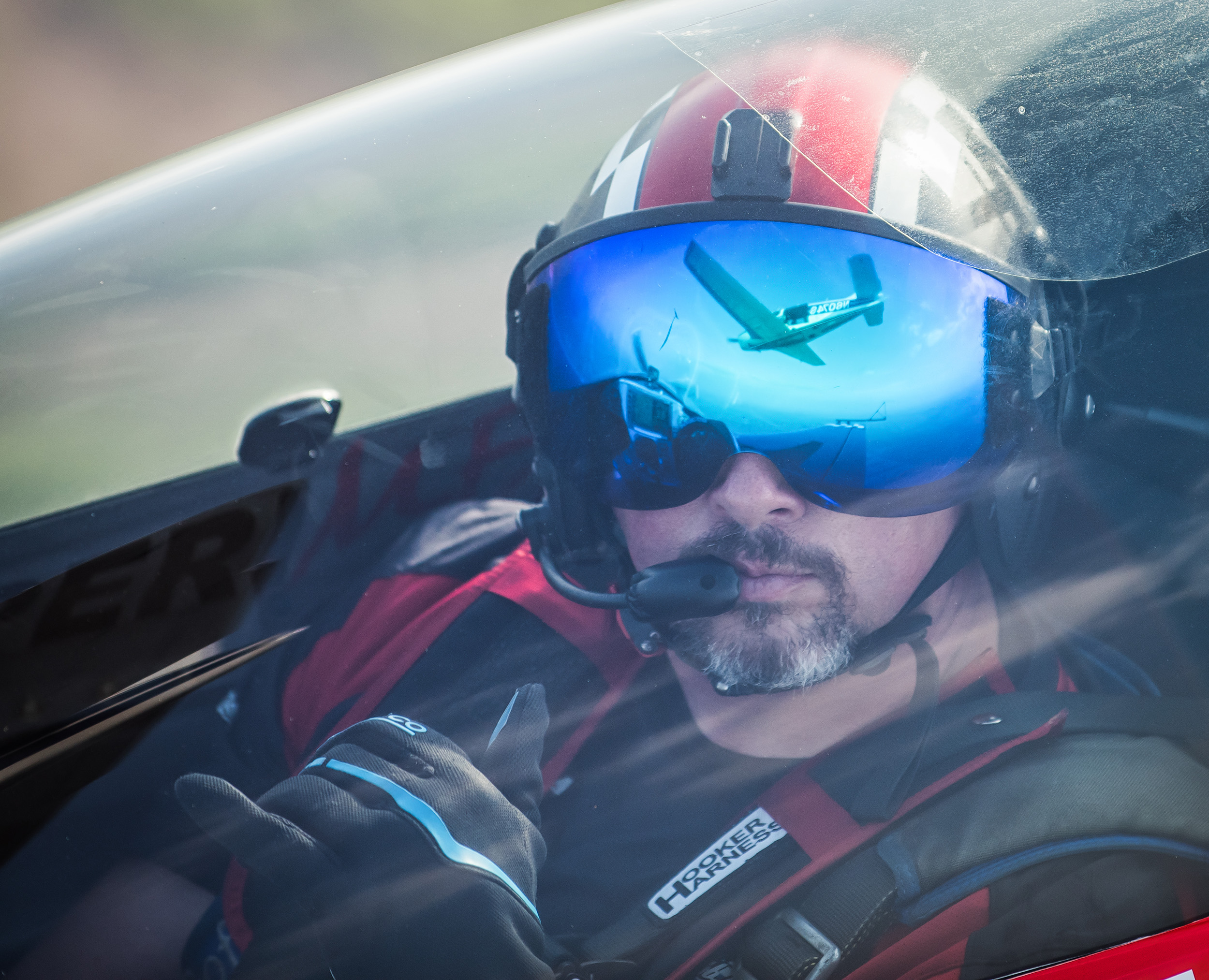Rob Holland unhurt after forced landing
Rob Holland, the most accomplished aerobatic competitor and showman of his generation, had his hands full on March 25 after a catastrophic engine failure covered his canopy with oil, and forced a landing that he walked away from, though his MXS-RH was badly damaged.
Holland, who won an unprecedented seventh consecutive U.S. National Aerobatic Championship, his eighth U.S. Freestyle Championship, and fourth consecutive World Freestyle Aerobatic Championship in 2017, was flying his custom MXS-RH from Kingsville, Texas, to Shreveport, Louisiana, at 11,500 feet when the engine blew, he recounted in a Facebook post on March 28.
Holland had departed Naval Air Station Kingsville about 4:30 p.m., and about 15 minutes into the flight, the engine blew. Holland wrote that he will not speculate on the cause of that catastrophic failure, and leave it to the FAA and NTSB to determine in due course.
The canopy “was immediately covered with oil and I had zero forward visibility,” Holland continued. He quickly determined that an off-field landing was not a good option given the terrain, and bailing out was also a dangerous choice given strong surface winds. He thanked MGL Avionics for “such an awesome EFIS system, which helped tremendously for my situational awareness.”
Able to see only a little bit out of the sides of the oil-soaked canopy, he used his instruments to aim for the nearest airport, finding a hole in the scattered-to-broken cloud layer in the vicinity of his chosen emergency landing option.
“It turns out that what I thought was a private airstrip was actually an abandoned airport,” Holland continued, noting the runway was about 30 feet wide and 1,650 feet long. “When I finally got low enough so that the clouds no longer obstructed my view of the runway, I was at 700 ft. and committed to making a downwind landing because of my position.”
Holland lined up as best he could given zero forward visibility, and touched down at 90 knots (the normal landing speed), but with a 20-knot tailwind.

“What I couldn’t see due to the oil on my canopy was a large piece of someone’s roof on the runway that had [been] blown there by Hurricane Harvey,” Holland wrote. After about 200 feet of landing roll, the left main wheel struck the debris and the impact ripped the gear assembly clear from the airplane. Holland’s MXS-RH continued to skid on its belly, veering off the side of the runway, and came to rest. “The plane remained upright and straight the entire time.”
Holland said he determined that he was uninjured, shut down the fuel, mags, and electrical power, and got out. He credited Hooker Harness and Bonehead Composites for “an AMAZING SAFETY BELT SYSTEM and FANTASTIC HELMET, both of which undoubtedly prevented me from suffering any injuries, it was a pretty violent ride when the gear came off.”
He also expressed gratitude to MX Aircraft Co.: “The airframe did an amazing job of absorbing impact energy helping to protect me from injury.”
Holland said the airplane is beyond repair, and he is working with MX Aircraft to replace it, details to come. “The next week or so will be very busy for me moving forward with as little (hopefully none) disruption to my schedule as possible.”
Reached by email, Holland told AOPA he prefers to let the post speak for itself, for now. “I was really just trying to stop rumors before they started,” Holland wrote, replying to a follow-up inquiry.
Holland’s Facebook page has collected more than 230,000 “likes” and 228,351 followers, so the word spread quickly. His account drew more than 355 comments and 1,100 reactions within 12 hours of the posting, fans offering thanks that he had emerged unharmed and congratulations on exemplary airmanship.
Holland’s 2018 schedule began with the Wings Over South Texas show in Kingsville, and his next scheduled appearance is April 14 and 15 at the Tuscaloosa Regional Airshow in Tuscaloosa, Alabama.




